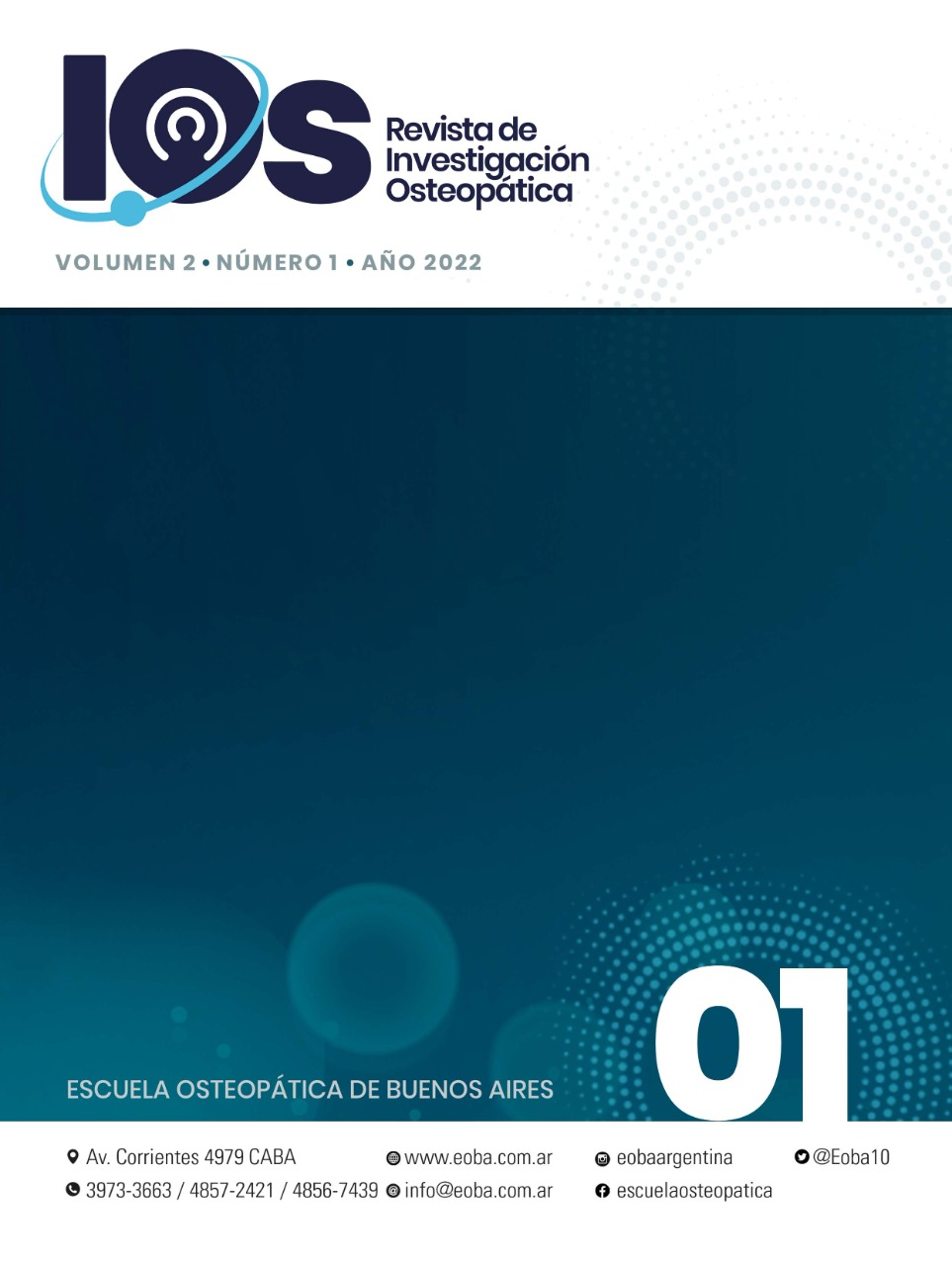Psychosomatic Osteopathy in Trauma using the example of bifocal integration
Abstract
Traumatic psychoemotional experiences often manifest in hypersympathetic states of excitement or in immobilization and withdrawal behaviors. A person with this kind of traumatic background may present with an autonomic response consistently maintained in the defensive state, which over time becomes a stressor. Similarly, stress associated with dysfunctional somaenergy-inner experience patterns that may occur during osteopathic treatment may be related to symptoms and complaints of the patient. In this article, the authors discuss an osteopathic approach to psychoemotional trauma and somatic-emotional dysfunctions by means of psychosomatic osteopathy using the example of multimodal bifocal integration (MBI), with an emphasis on promoting a relaxed body and mind by actively involving the patient in the healing process. They briefl y discuss the role of mind-body therapies in treatment, considering other neuropsychophysiological frameworks. The authors also focus on clinical practice, introducing the reader to the different elements of the osteopathic treatment, including the acknowledgement and integration of top-down and bottom-up dynamics in diagnosis and therapy.References
van der Kolk, B.A., Fisler, R. Dissociation and the fragmentary nature of traumatic memories: Overview and exploratory study. J Trauma Stress 8, 505–525 (1995). https://doi.org/10.1007/BF02102887
Giller E. What is psychological trauma? https://www.sidran.org/resources/for-survivors-and-loved-ones/what-is-psychological-trauma/
Allen JG. Afrontar el trauma: una guía para la autocomprensión. Washington, DC: American Psychiatric Press; 1995.
van der Kolk, B.A. Clinical Implications of Neuroscience Research in PTSD. Ann NY Acad Sci 2006; 1071 (1): 277-293. https://doi.org/10.1196/annals.1364.022
Wynn, G.H. Complementary and Alternative Medicine Approaches in the Treatment of PTSD. Curr Psychiatry Rep 17, 62 (2015). https://doi.org/10.1007/s11920-015-0600-2
Kim SH, Schneider SM, Kravitz L, Mermier C, Burge MR. Mind-Body Practices for Posttraumatic Stress Disorder. J Investig Med 2013; (615): 827-834. http://dx.doi.org/10.2310/JIM.0b013e3182906862
Instituto Nacional para la Excelencia Sanitaria y Asistencial (NICE). Guía NICE [NG116]: Trastorno de estrés postraumático (diciembre de 2018). https://www.nice.org.uk/guidance/ng116/chapter/recommendations#management-of-ptsdinchildrenyoung-people-and-adults
Asociación Americana de Psicología. Guía de práctica clínica para el tratamiento del TEPT. Washington, DC: American Psychological Association; 2017. https://www. apa.org/ptsdguideline/ptsd.pdf
Kar N. Cognitive behavioural therapy for the treatment of post-traumatic stress disorder: a review. Neuropsy- chiatr Dis Treat 2011; 7: 167- 181. https://doi.org/10.2147/NDT.S10389
Cusack K, Jonas DE, Forneris CA, et al. Psychological treatments foradults with posttraumatic stress disorder: a systematic review and meta-analysis. Clin Psychol Rev 2016; (143): 128-141. https://doi.org/10.1016/j.cpr.2015.10.003
Mehling WE, Wrubel J, Daubenmier JJ, Price CJ, Kerr CE, Silow T, Gopisetty V, Stewart AL. Body Awareness: a phenomenological inquiry into the common ground of mind-body therapies. Philos Ethics Humanit Med. 2011 Apr 7;6:6. https://doi.org/10.1186/1747-5341-6-6

This work is licensed under a Creative Commons Attribution-NonCommercial-ShareAlike 4.0 International License.





